Sunflowers and Leaf-cutters
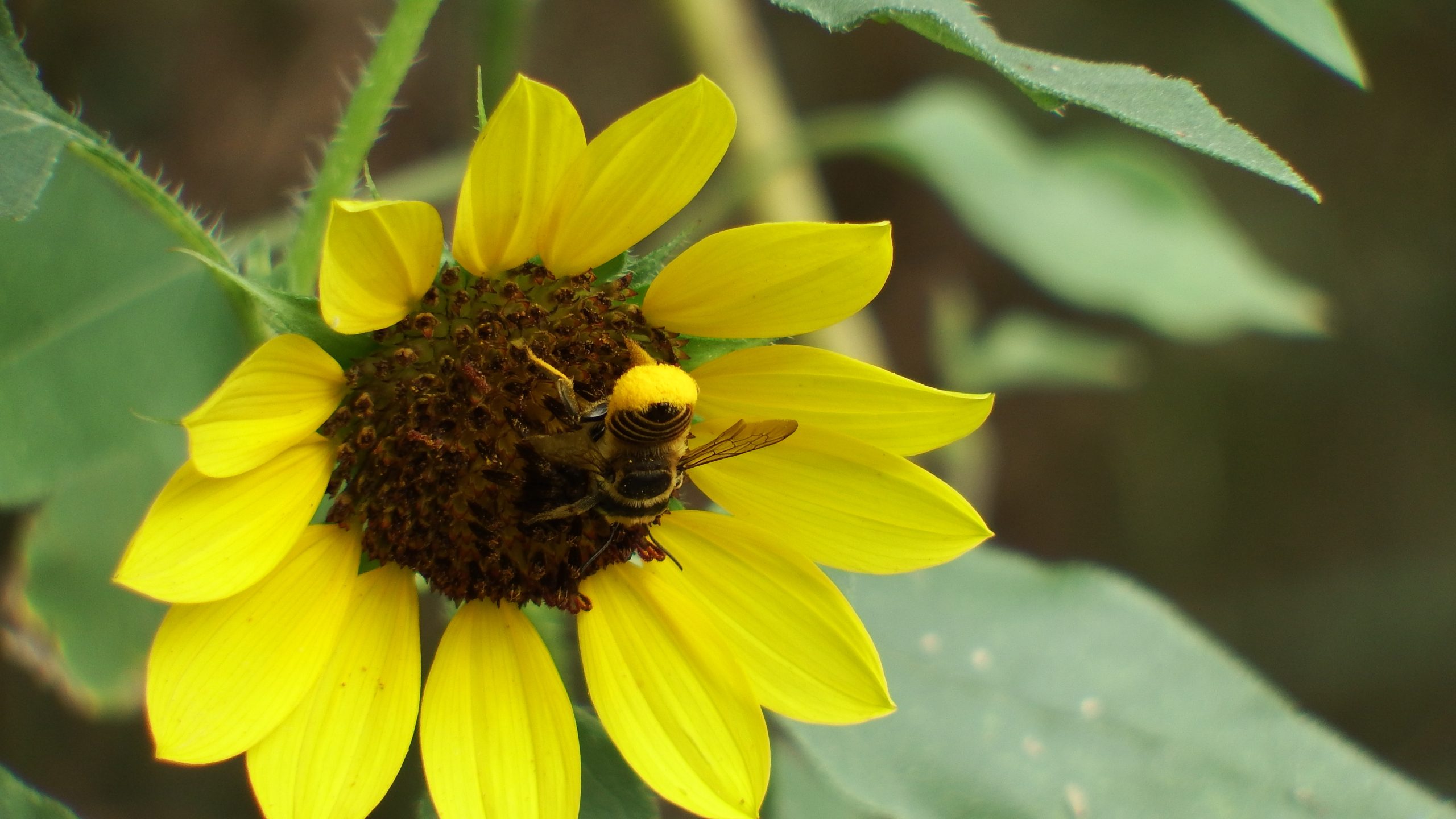
Buffalo Bayou Park is full of Common Sunflowers, and our Common Sunflowers are full of leaf-cutter bees.
Common Sunflowers are just that, common. They are the tall ones (four to six feet) with flowers four to five inches in diameter. You can find them everywhere. They were an important food crop for native peoples. So important, in fact, that some archaeologists propose they were domesticated before corn.
In the 1500’s, Spanish explorers brought seeds back to Europe and Russians began developing the huge sunflowers that now grace fields across France. But all those huge beauties originated from our own Common Sunflower. Sunflowers are the only major crop to have originated within the U.S.*
We speak of a sunflower as though it were a single flower, but it is not. Each flower head contains a multitude of individual flowers. In this close-up, you can see each of the tiny tubular flowers. Each one is a complete flower with both female and male sex organs, and each one makes its own seed. That’s how you end up with a yellow “flower” full of tightly packed sunflower seeds!
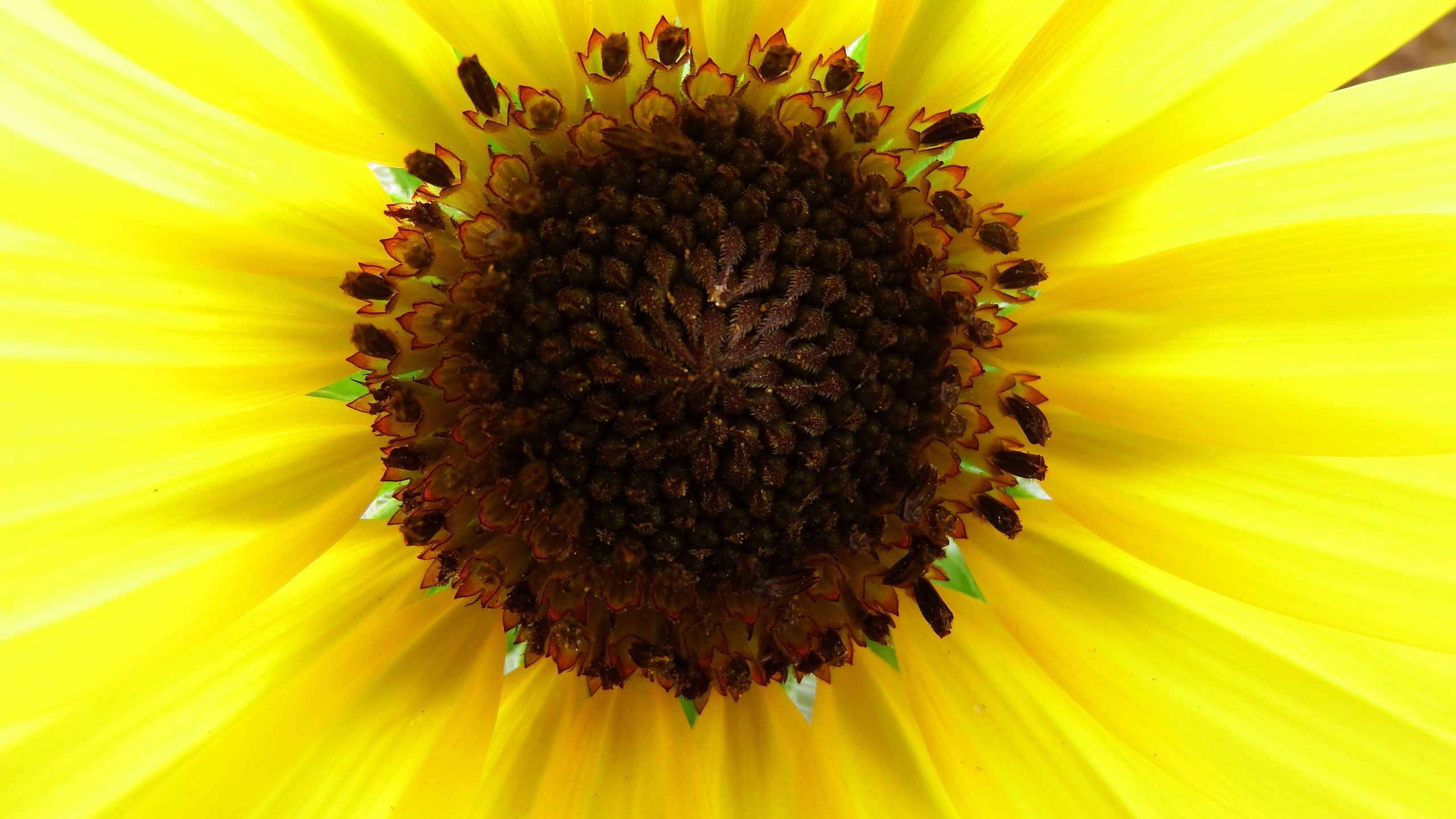
Every patch of Common Sunflowers I visited was full of bees and the bee I saw over and over was a very striking leaf-cutter bee.
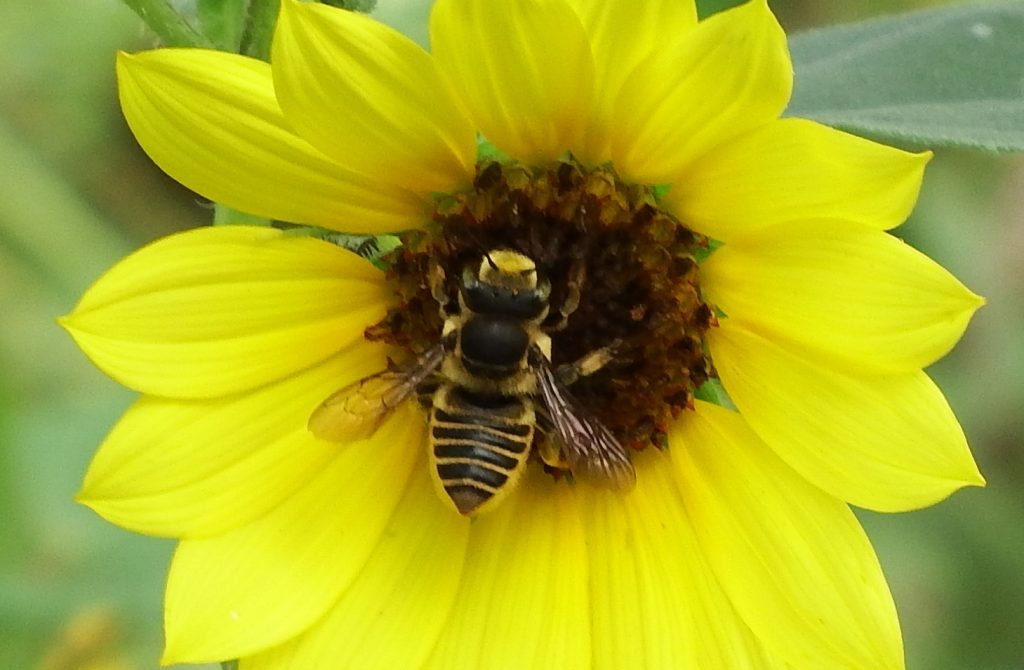
Bees are challenging to identify because to inspect all the important features, you pretty much have to kill the bee. But, you can identify a leaf-cutter bee even at a distance; they are the only bees with yellow bellies. Actually, they are the only bees with hairy bellies. That specialized hair drags across flowers as the bee searches for nectar. Pollen sticks to the hairs making the bellies look yellow.
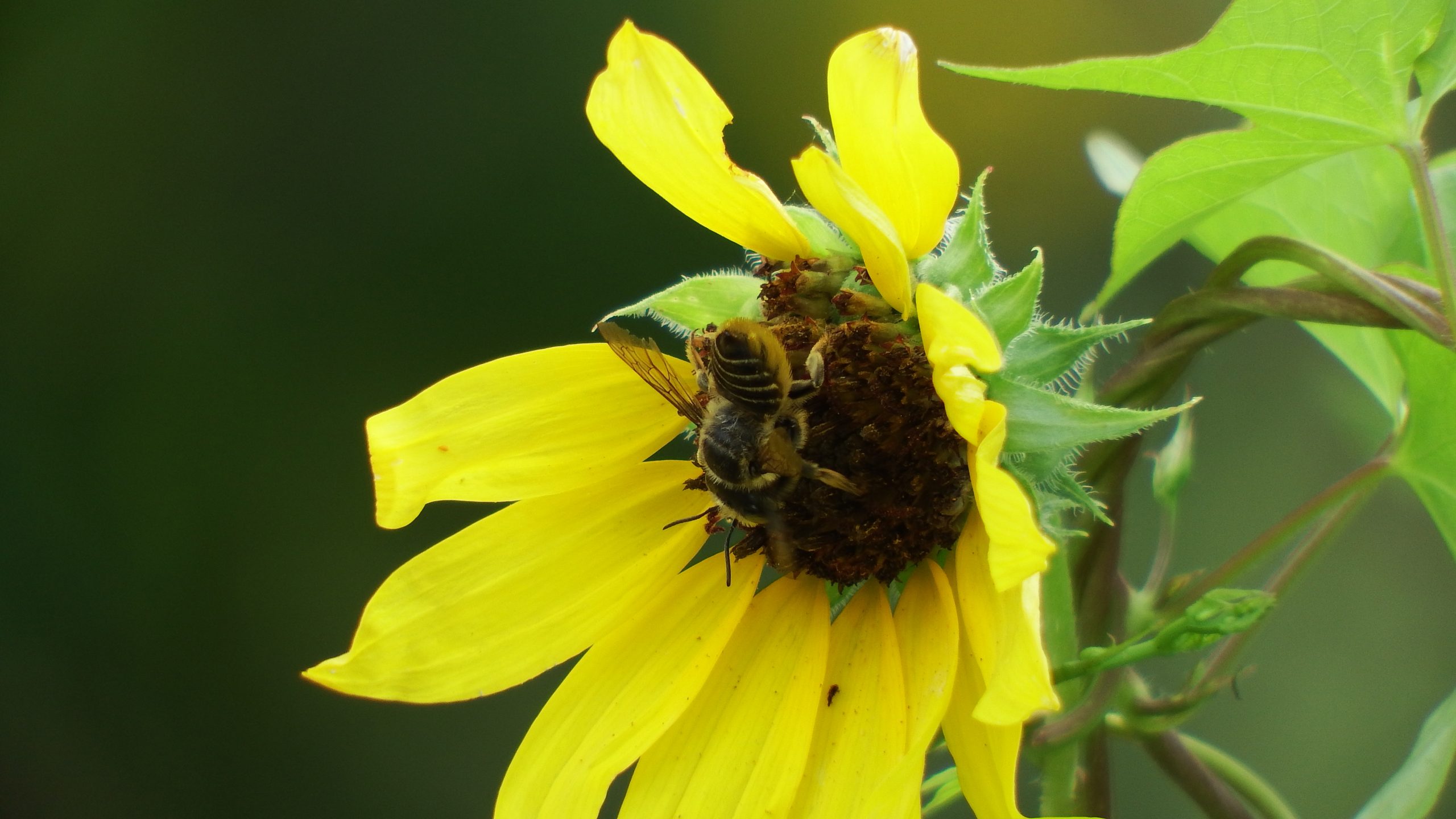
Their enormous pollen carrying capacity makes leaf-cutter bees very valuable pollinators. Alfalfa farmers, in particular, rely on a species of leaf-cutter bee to pollinate their crops.
You might have noticed that despite their most striking attribute, these bees are not known as yellow-belly bees. That’s because they do something even cooler than decorate their abdomens. They cut perfect circles out of leaves and use those bites of leaf to make their nests.
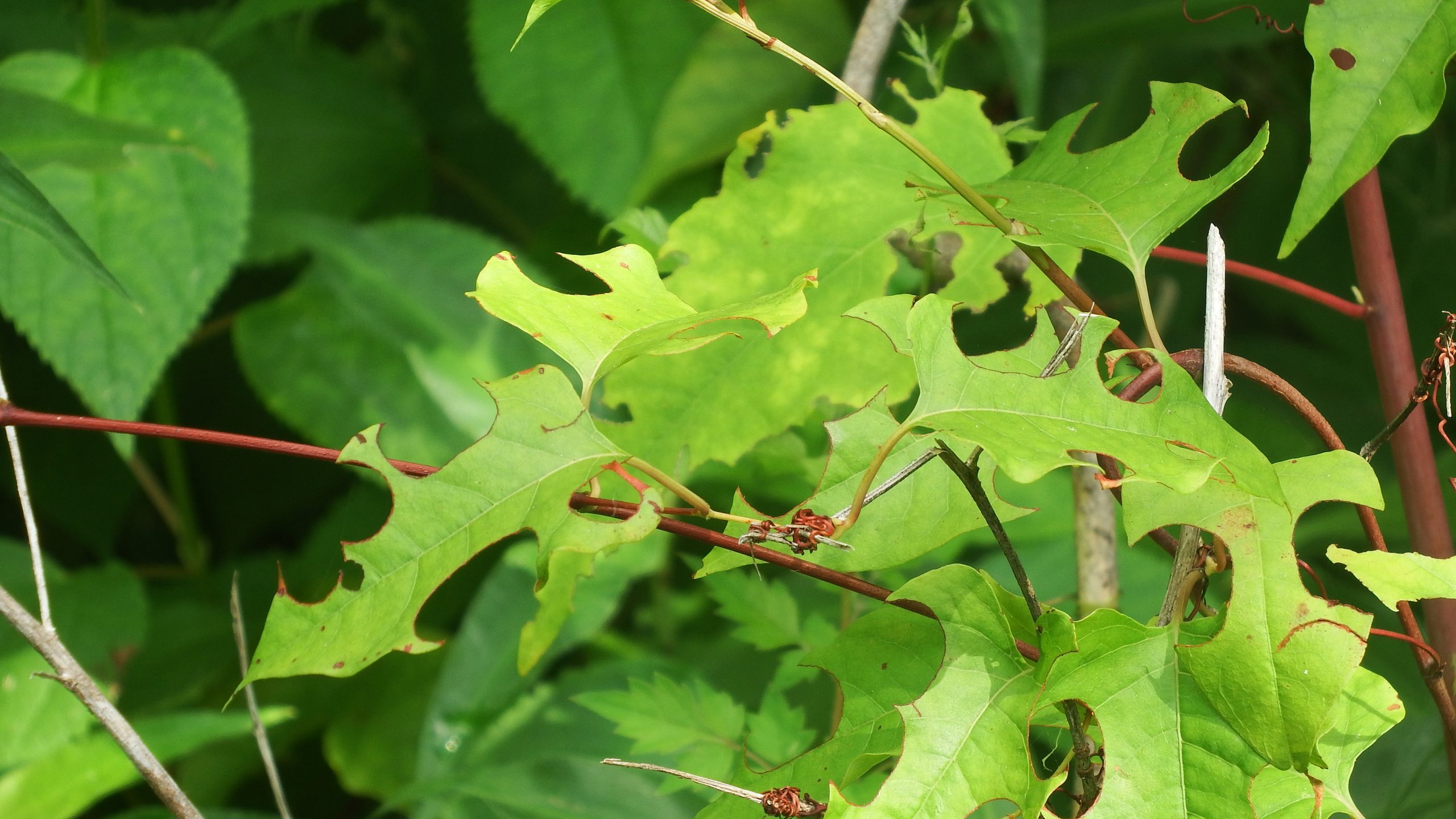
Leaf-cutter bees are cavity nesters. Some members of the family chew holes in stems and soft wood, others build cavities from mud daubs or use existing holes made by others. The leaves they cut out are used to line their nests, build walls between individual eggs and plug up the end of the nesting cavity.
Almost as soon as leaf-cutter bees emerge from their nests, they mate and the males die. The females then begin to collect pollen and lay eggs. Each egg is cradled in a leaf and laid on a ball of pollen and nectar made by mom. She puts a leaf into the hole to make a wall and then makes another pollen ball and lays another egg. She repeats this process until all her eggs are laid.
We have over 600 species of native bee in Texas and every one of them is as fascinating as that non-native European honey bee.
*I learned this from “Wildflowers of Houston & Southeast Texas by John and Gloria Tveten. The Tvetens were an invaluable resource for information about Houston butterflies and flowers and I highly recommend their guides.

